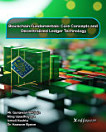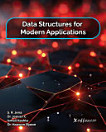FUTURE TRENDS IN BLOCKCHAIN SCALABILITY, INTEROPARABILITY, AND BEYOND MACHINE LEARNING
இந்த மின்புத்தகத்தைப் பற்றி
ஆசிரியர் குறிப்பு
Manoj Ram Tammina is a highly skilled software developer with a passion for driving innovation in the field of Information Technology. With over 8+ years of experience, he has proven expertise in designing and developing cutting-edge mobile and web applications. Currently working as a Sr. Software Developer, Innovation at Bread Financial in Columbus, Ohio. Manoj holds two master's degrees from the USA—one in Computer Science at West Chester University and another in Information Security at University of the Cumberlands, reflecting his dedication to academic excellence and expertise in diverse technology domains. Currently, he is pursuing a Ph.D. in Information Technology, furthering his passion for research and knowledge expansion.
Ravi U. Kalkundri completed his Bachelor of Engineering in Computer Science and Engineering and completed in 2009 from Gogte Institute of Technology, Belgaum. He worked in industries at different positions like Software Engineer and Senior Software Engineer. In 2011, he went on to peruse Masters in Technology in Computer Science and Engineering, from Gogte Institute of Technology, Belgaum. Currently he is working as Assistant Professor at Gogte Institute of Technology in the Department of Computer Science and Engineering, and currently perusing his PhD in the field of Network Security. His research interests are in the area of Security and Blockchain.
Ismail Keshta received his B.Sc. and the M.Sc. degrees in computer engineering and his Ph.D. in computer science and engineering from the King Fahd University of Petroleum and Minerals (KFUPM), Dhahran, Saudi Arabia, in 2009, 2011, and 2016, respectively. He was a lecturer in the Computer Engineering Department of KFUPM from 2012 to 2016. Prior to that, in 2011, he was a lecturer in Princess NourahbintAbdulrahman University and Imam Muhammad ibn Saud Islamic University, Riyadh, Saudi Arabia. He is currently an assistant professor in the computer science and information systems department of AlMaarefa University, Riyadh, Saudi Arabia. His research interests include software process improvement, modeling, and intelligent systems.
Prof. Niraj Upadhayaya is currently working as Professor in Computer Science and Engineering Department at SRM AP University Amaravati A.P. He Did his B. Tech from M.M.M. Engineering College Gorakhpur in 1987 and M.S. from BITS Pilani in the year 2000. He joined Indian Broadcasting Engineering Services in 1987 and served there for 15 years. Prof Niraj did his PhD in Computer Engineering from University of The West of England Bristol in 2005. He worked at JBIET Hyderabad as HOD (CSE), Dean, Vice Principal and Principal during 2006 to 2023. His research area is Cloud and Edge computing. Six PhD scholars have completed under his supervision. He is having 18 patents, 37 research publication and He received AICTE-RPS and DST-FIST Grants from AICTE and DST.








